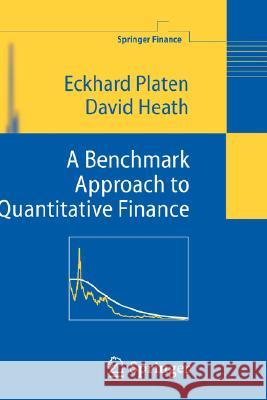A Benchmark Approach to Quantitative Finance » książka
A Benchmark Approach to Quantitative Finance
ISBN-13: 9783540262121 / Angielski / Twarda / 2006 / 700 str.
A Benchmark Approach to Quantitative Finance
ISBN-13: 9783540262121 / Angielski / Twarda / 2006 / 700 str.
(netto: 182,29 VAT: 5%)
Najniższa cena z 30 dni: 191,40 zł
ok. 20 dni roboczych.
Darmowa dostawa!
In recent years products based on ?nancial derivatives have become an ind- pensabletoolforriskmanagersandinvestors. Insuranceproductshavebecome part of almost every personal and business portfolio. The management of - tual and pension funds has gained in importance for most individuals. Banks, insurance companies and other corporations are increasingly using ?nancial and insurance instruments for the active management of risk. An increasing range of securities allows risks to be hedged in a way that can be closely t- lored to the speci?c needs of particular investors and companies. The ability to handle e?ciently and exploit successfully the opportunities arising from modern quantitative methods is now a key factor that di?erentiates market participants in both the ?nance and insurance ?elds. For these reasons it is important that ?nancial institutions, insurance companies and corporations develop expertise in the area of quantitative ?nance, where many of the as- ciated quantitative methods and technologies emerge. This book aims to provide an introduction to quantitative ?nance. More precisely, it presents an introduction to the mathematical framework typically usedin?nancialmodeling, derivativepricing, portfolioselectionandriskm- agement. It o?ers a uni?ed approach to risk and performance management by using the benchmark approach, which is di?erent to the prevailing paradigm and will be described in a systematic and rigorous manner. This approach uses the growth optimal portfolio as numeraire and the real world probability measure as pricing measur











